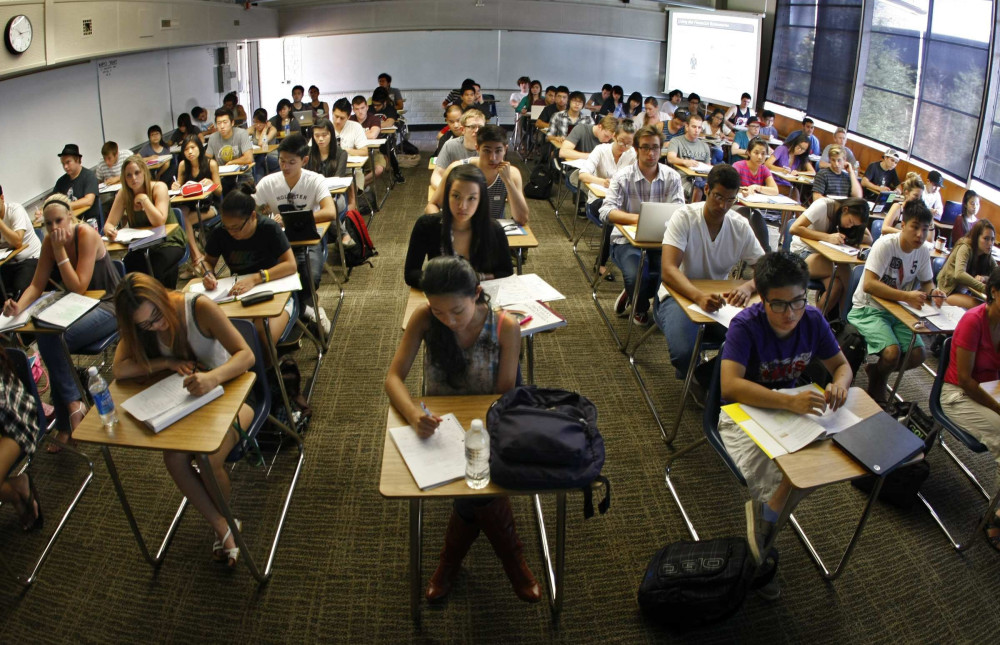By Jon Marcus and Holly K. Hacker
The Hechinger Report.
WASHINGTON
The sticker price at Pennsylvania State University runs about $30,000 a year for in-state students.
At Swarthmore College, it’s nearly twice that.
Yet Swarthmore ends up being cheaper for most students.
That’s because this private liberal arts college near Philadelphia offers many families a hefty discount, bringing down the average cost to even less than taxpayer-subsidized Penn State’s.
This kind of information used to be hard or impossible to find because colleges don’t always want people knowing what they really pay, or that some families may be paying a lot less than others.
But now the U.S. Department of Education collects this information, and Hechinger is making it available in even more detail through our Tuition Tracker database, at http://www.tuitiontracker.org/.
As part of a sweeping yet little-noticed higher education law from 2008, colleges and universities must report their out-of-pocket cost to students, the so-called “net price.” They also must disclose how much they charge families in different income brackets.
The sticker price includes tuition and fees, room and board, books and other expenses. The net price is what students actually pay, either out of their own pockets, their parents’ or by taking out loans, after subtracting grants or scholarships.
The idea behind publicizing the net price is to give families better information as they shop for colleges and, as the late Sen. Edward Kennedy of Massachusetts explained when the federal legislation was passed, to “promote an environment where colleges think carefully before they raise their prices.”
Some schools have since moved to limit cost increases, but it’s unclear how much the publication of net price data has driven that restraint.
The Education Department won’t say how many people use the two principal websites through which it provides this information, College Navigator and College Scorecard.
Whatever those numbers are, they are so low that they aren’t even tracked by services that rate Internet traffic.
What the data show is that, at Swarthmore, for example, students from families earning between $48,000 and $75,000 received enough grant and scholarship money to bring their average net price below $12,000 per year.
At the seemingly more affordable Penn State, in-state students from the same income bracket paid a net price nearly twice that.
These net price figures aren’t perfect. They’re reported only for full-time, first-time college students, freshmen, typically. Part-timers, transfers and returning students aren’t included.
Plus, these net prices sorted by family income only take into account students who applied for and received federal financial aid.
Because most federal aid is need-based, the data tend to capture more low- and middle-income students, as opposed to high-income ones.
Still, it’s low-income students who can benefit the most from understanding the difference between sticker price and net price.
Many high-achieving low income students don’t even try to get into the Dartmouths and Dukes of the world as their wealthier peers do, a study last year by researchers at Stanford and Harvard found.
Among the reasons: They get scared off by the high sticker prices and don’t bother to apply, unaware they’d likely qualify for a lot of financial aid.
As it turns out, those very selective colleges would probably be more affordable than the less selective schools where many talented low-income students end up.
Of course, this confusion would not exist if colleges published their net prices rather than the sticker prices that few students actually pay.
But colleges cling to their sticker prices because, among other reasons, many families respond to the psychological appeal of getting discounts in the same way shoppers flock to the sales at Macy’s.
The schools also know that some students and their parents can afford to pay the sticker price, or close to it.
And they increasingly need that revenue. Among other things, colleges can use it to give financial aid to lower income students, or others they want to recruit.
It’s part of a murky system of subsidies under which wealthier students subsidize their lower income classmates, out-of-state students subsidize in-state ones, humanities majors subsidize science majors, freshmen and sophomores subsidize juniors and seniors, and international students subsidize everyone.
A few colleges, however, including Concordia University, Saint Paul, and some small private colleges that have had trouble meeting their enrollment goals, have lowered their sticker prices because they’d become so high that they were scaring families away. And almost nobody paid them anyway.
In short, like airlines that charge different amounts for seats on the same flights, colleges charge students different amounts to take the same classes and earn the same degrees.
Mark Kantrowitz, a national expert and author on financial aid, advises students to apply to the schools that appeal to them, no matter the published price.
“If a school wants to recruit you,” he said, “they’re going to leverage the financial aid to get you to go.”
___
(This story was produced by the Hechinger Report, a nonprofit education-news outlet affiliated with Teachers College, Columbia University, in collaboration with the Dallas Morning News.)
___














































































































































































































































































































































































